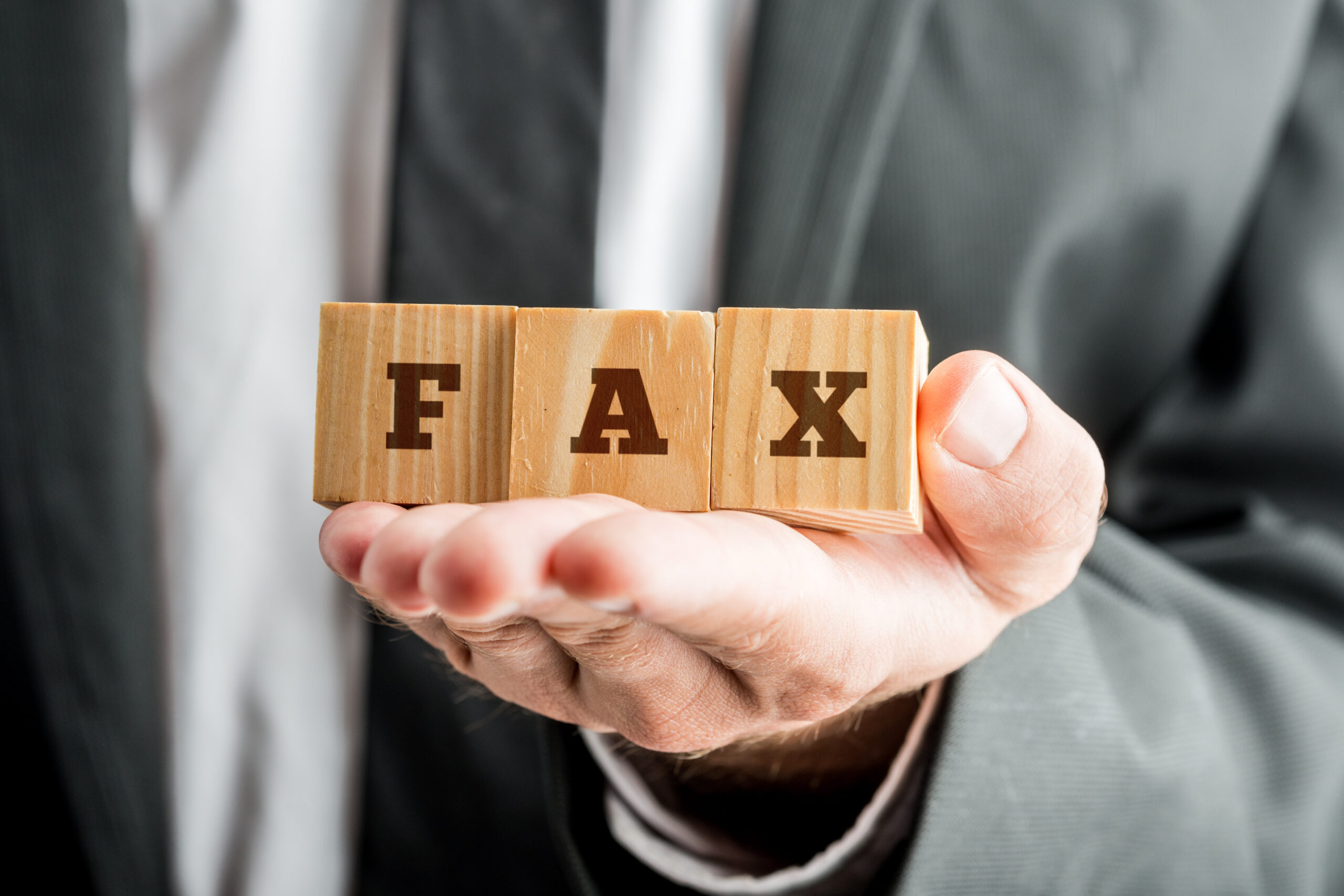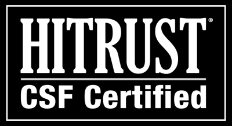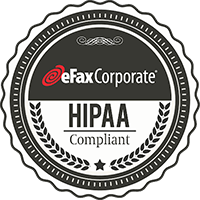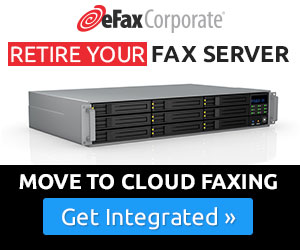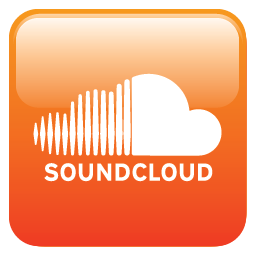Why Most Arguments About Faxing Miss the Point
Let’s try a thought experiment. Imagine you learned that Apple’s App Store (or the Google Play Store – we’re platform-agnostic here at Consensus Cloud Solutions) was built using a programming language so old that it’s no longer in use by anyone except the engineering teams maintaining and updating the store itself.
Armed with that information, are you more likely to be worried about the store’s stability, or its capabilities? Do you think the company needs to take it down immediately and build a new store using a more modern coding language? Probably not. I’m guessing you trust that the engineers at Apple or Google know what they’re doing.
After all, when you think about your preferred app store, you’re not thinking about the underlying tools that keep it functioning properly. You’re thinking only about whether you can quickly find and download an app when you want it.
I think conversations today about faxing often miss this fundamental point. Businesses would be better served by viewing fax more like an app store – as a background technology, an infrastructure that enables workflows – rather than something to worry about because of when it was invented.
Yes, faxing has been around for nearly two hundred years; it predates the telephone by more than thirty years. But the fact that the telephone was invented in the 1870s doesn’t cause you to question the viability of your smartphone today. So why are we holding age against fax technology?
As I’ll explain below, with the right tools and technologies in place, faxing can be as modern, intelligent, and automated as any other type of contemporary digital data exchange.
Illustrating the confusion: is the U.S. government for or against fax?
The main theme of my state-of-fax analysis is that faxing means different things to different people, which is why discussions about the topic tend to be unproductive and confusing. For an illustration of this, let’s look at a couple of recent fax-related stories coming from two U.S. federal agencies.
When Centers for Medicare & Medicaid Services (CMS) Director Seema Verma said she wanted to make “doctors’ offices a fax-free zone” by 2020, she wasn’t arguing against fax in general, only the fact that paper faxes are unstructured documents that require manual review and re-keying information into an electronic database. Not an unfair criticism.
To Director Verma, “fax” is simply any analog fax machine producing unstructured data that requires manual intervention, a workflow that opens the door for delays in care, additional costs to providers, and the increased possibility of human error that could harm a patient.
Contrast this attitude with the U.S. Department of Veterans Affairs, which in late 2022 announced it was partnering with Consensus Cloud Solutions to implement our Enterprise Cloud-Fax Solution (ECFax) at 2,000 VA locations.
To the Department of Veterans Affairs, “fax” doesn’t mean paper documents, manual data-entry, filing, or any other dated associations the term has for Director Verma. To the VA, faxing is simply a transmission protocol that many of its healthcare partners and patients continue to use, and that the agency can now support digitally, with advanced fax annotation, mobile apps, and even a secure API that connects digital faxing directly into the VA’s EHRs and other platforms.
FAX CONTINUES TO SOLVE HUGE PROBLEMS
If you’re wondering why we’re still talking about fax at all, decades into the 21st century, that’s a fair question. But there are several reasons that even a 1980s-style analog fax machine persists in the business world.
1. It’s easy
Training a new employee on your company’s CRM, EHR, or other business workflow applications can take weeks. But if you ask a new-hire to fax a document, often that person’s only question will be, “Does the paper go into the machine face-up or face-down?” Yes, some younger employees won’t be familiar with a desktop fax machine, but it doesn’t take more than a few minutes to show them that it’s just an oversized smartphone with a giant keypad and a paper feeder.
2. It holds up in court
As the company that has handled digital cloud faxing for heavily regulated businesses longer than any other provider, we at Consensus can tell you that faxing is a legally friendly method of document exchange. Courts look favorably on faxes for transmitting sensitive data for several reasons; it is more difficult to intercept a fax than an email, for example. But one of the key legal benefits of a fax is the timestamp, which proves not only what was transmitted but also when and by whom, which is often the key dispute in a legal challenge over a bid or contract.
3. It gives you a receipt
A fax transmission also provides a confirmation report to let you know right away that the document was delivered successfully to the recipient. And if the transmission encountered an error, the fax solution (whether it’s a fax machine, fax server, or cloud- fax service) will send you that notification immediately as well, so you know you should re-attempt the transmission.
4. It drives key business workflows
This is probably the biggest reason for fax’s staying power as a data exchange protocol. Nobody sends a fax to say hello. Your employees use fax to send and receive important documents – a signed agreement, a release form, medical records for a patient – that drive key revenue generating workflows for your company. Faxes literally mean business.
5. It’s near universal in several industries
Finally, faxing remains a necessary capability for businesses (especially those in certain industries) due to a version of the network effect. If most organizations in your industry or your company’s ecosystem continue to do business by fax, then you need faxing capability as well.
Two industry-specific explanations for fax’s staying power
Using that last explanation above, the near ubiquity of fax in certain industries, here are several real-world situations our cloud-fax clients commonly encounter that explain why they continue to need fax capability.
Financial services
Many of our wealth management advisors have told us that their wealthier clients will exchange documents only by fax. One reason is that these people tend to be older, and they’ve grown comfortable using fax machines. But another reason is that these people have seen the headlines of high-profile computer and email hacks, and they feel safer using a data exchange protocol that flies under cybercriminals’ radar.
Healthcare
We hear often from our hospital and large health-network clients that they continue to receive patient records from primary care physicians by fax. If an individual doctor’s practice learns one of its patients has been admitted to a hospital ER, and that doctor needs to send over the patient’s medical history, often the quickest and easiest way is to fax the documents to the hospital’s nurse station.
FAX CAN MEAN VERY DIFFERENT TECHNOLOGIES FOR SENDER AND RECIPIENT
Let’s bring this discussion back to my original theme: “Faxing” can mean different things to different people. Even in the previous healthcare scenario above, the two parties on either side of the same fax transmission may understand faxing differently. Here’s what that might look like.
The sender’s analog fax experience is slow and tedious
For the sender, such as a pharmacist, fax might mean:
- Printing out the relevant patient records.
- Handwriting a fax cover letter for the hospital.
- Taking the pages to the office fax machine, dialing the hospital’s fax number, and waiting by the machine until it prints out a “delivery confirmation” receipt.
- Filing the fax in the patient’s hardcopy folder (or shredding the documents).
The recipient’s digital cloud-fax experience is quick and automated
For the recipient (the hospital), a fax might mean:
- The patient’s records come in as a digital PDF to a shared inbox.
- The digital fax solution incorporates an advanced Natural Language Processing (NLP) engine that seamlessly reads and extracts key patient demographics from PDFs, regardless of whether they are typed or handwritten or come in different forms. It then generates a Continuity of Care Document (CCD) automatically. This CCD is securely delivered through a Direct Secure Message (DSM). In most cases, an EHR can perform a patient match that directly associates the fax to the patient record. If there is no immediate match, an authorized user can review the CCD and manually associate it with the patient’s record within the EHR, eliminating the need for scanning or uploading the fax.
- Additionally, by connecting disparate systems through an integration engine, the faxing process can exchange data, whether it’s just faxes or other unstructured data, and transform it into usable, structured data. The automation of data exchange is achieved by the integration engine by using standard healthcare communications such as HL7, FHIR, or other APIs. With this approach, users don’t need to change their current processes as the integration engine handles all the work, including data exchange, automation, conversion, and more.
FOUR LEVELS OF FAX CAPABILITY IN 2023
As I’ve alluded to but not yet stated outright, there are several levels of faxing capability available to businesses today, ranging from an analog experience not very different from the 1980s fax process, all the way up to an AI-driven digital fax environment that automates key workflows across the business.
Here’s a brief overview of your choices.
Level 1: Desktop fax machine
This remains the choice for many small businesses, because they continue to need fax capability and don’t see any reason to upgrade from the analog equipment and processes that they’ve been using for years.
The challenges:
What these businesses often miss, however, are the high costs of maintaining this solution, and not only the obvious ones, such as replenishing ink or toner cartridges, buying paper, and possibly paying for shredding that paper for security or compliance purposes.
The other costs include the time and energy that the businesses’ employees spend every day manually processing fax documents, time they could be putting to more productive, higher-return projects.
And with the 2019 FCC ruling that telecom providers are no longer required to support analog phone lines, maintaining traditional desktop fax machines will become more difficult and expensive each year.
Level 2: In-house fax server
Fax servers offer improved efficiency than their desktop counterparts. They allow your employees to send faxes electronically, for example, without feeding paper into a machine. That means no more waiting in line to send a fax, and it can also mean more central visibility into the company’s fax usage.
The challenges:
But managing on-prem fax servers is not a set-it-and-forget-it experience. The hardware-driven infrastructure demands a high level of training, administration, and troubleshooting. Configuring an in-house fax server is a complex undertaking, requiring far more technical know-how than setting up a standard desktop fax machine.
Fax servers also create new expenses above and beyond those of the analog fax machine, including additional hardware to buy, software licenses, and more expensive telephony lines.
It’s also worth noting that with any on-prem fax infrastructure, whether built on fax machines or servers, your business will need to configure the environment for peak capacity, even though you might experience that level of demand only rarely. This is why fax servers are often prohibitively expensive, as businesses end up paying for unneeded bandwidth so that they can handle the occasional spike in transmission volumes.
Level 3: Standard cloud faxing
Cloud-fax services eliminate many of the drawbacks and costs of traditional fax equipment. Typical services allow your employees to receive, review, forward, and send faxes without paper or printing, and often from any internet device.
The challenges:
Cloud-fax solutions solve far more typical business workflow challenges than they create. But it is worth keeping in mind that these solutions are not all created equal. Here are a few of the things you’ll need to consider when vetting cloud-fax providers:
- How long have they been in business? The longer the better.
- Who are their clients? Look for large enterprises and organizations as well as businesses in heavily regulated industries. These are both strong proxies for a provider’s reliability, reputation, security, and regulatory compliance.
- To what degree (if any) does their cloud-fax solution integrate with other applications?
- What compliance certifications does this cloud fax solution possess? Does it meet the rigorous standards of HIPAA compliance, ensuring data security and privacy across many industries? Does it hold certifications like HITRUST CSF® Certification, recognized as the gold standard for healthcare compliance in the United States? Finally, does the solution comply with PCI standards to meet secure payment processing requirements?
- To what degree (if any) does their cloud-fax solution offer NLP, Artificial Intelligence, and other tools to help your staff automate key everyday workflows?
Level 4: Cloud faxing with built-in NLP and AI
This, in my view, is the next generation of faxing capability.
Fax remains an unstructured format, lacking the advantages of structured data. Faxes are essentially flat files or document images that require human review and interpretation to be actionable.
While standard cloud fax solutions address common challenges associated with paper-based faxing, if your cloud-fax solution lacks additional technologies, faxes will remain unstructured data that needs to be integrated into workflows. To enhance digital fax processes, integrating technologies such as natural language processing (NLP) is essential. NLP enables the extraction and interpretation of text within faxes, allowing for the understanding of keywords like “Urgent” or “Priority” and enabling document prioritization.
WHICH FAX IS RIGHT FOR YOU?
As I noted earlier, if your app store of choice offers a big enough library of apps and lets you reliably download the ones you want, you probably don’t care what the engineering department’s tech stack looks like.
And if you need to continue using fax to exchange data with vendors, partners, clients, patients, or other parties in your company’s ecosystem, it shouldn’t matter what their preferred faxing process is. You can implement any type of faxing infrastructure that’s right for your company – up to and including an AI-driven digital fax solution that does most of the work for you – and easily exchange faxes with any other company, whether they’re using the same AI solution you are or a 1980s-looking plastic box connected to a phone outlet in the wall.
Today more than ever, faxing capabilities vary widely, and you can customize the ideal environment for your organization. You just need to decide what “fax” means to you.
